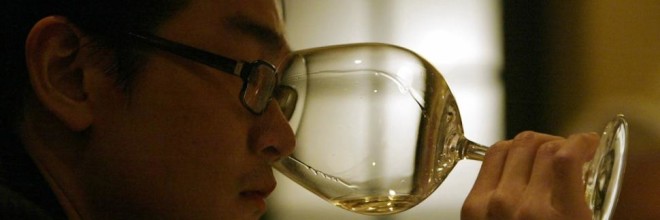On Thursday, August 7, 2014, Indonesian wine collector Rudy Kurniawan was sentenced to ten years in prison by U.S. District Judge Richard Berman. Mr. Kurniawan is purported to have swindled more than $20 million worth of fake wine that he allegedly created in his California home and later sold to collectors. Purchasers of Kurniawan’s wines included Bill Koch, David Doyle (co-founder of Quest Software Inc.), and real estate tycoon Peter Fascitelli. In December, jurors convicted Mr. Kurniawan of mail fraud and wire fraud. See Vintage Wine Scammer Kurniawan Sentenced to 10 Years Jail. Prosecutors urged a sentence term of 14 years, offering evidence that Rudy Kurniawan had cheated collectors, auction houses, and many others between the years 2004 to 2012.
When imposing the sentence, Judge Berman noted that Mr. Kurniawan “failed to accept responsibility from his crimes.” Id. The Judge ordered Mr. Kurniawan to forfeit $20 million—inclusive of real estate, art, jewelry, and wine—as well as to pay $28.4 million to the purchasers of rare French wines he created and/or blended and bottled at his California home. The Judge noted that “[t]he public at large needs to know that our food and drink are safe and that what’s on the label and is not some potentially unsafe, homemade witches brew.” Id.
Kurniawan is the first individual in the U.S. to be prosecuted for wine fraud. In addition, it is believed that his wine fakes will “infiltrate” the marketplace and auction houses for years to come. Id. While ten years may seem like an unconventionally high sentence term for a crime of this nature, the extent of Mr. Kurniawan’s operation, as well as its effects, will be felt for years to come. Many reason that an extreme sentence term should reflect the extremity of Mr. Kurniawan’s enterprise, as well as pose as a warning for any other individuals contemplating a similar scheme. It should also serve as a message to the public at large, so that consumers may feel confident in their food and beverage purchases. Still, Kurniawan’s attorney, Jerome Mooney, argued that the wealth of the victims at issue in this case significantly diminished the gravity of Kurniawan’s crime. See Wine Fraudster Rudy Kurniawan, Once an L.A. Name, Gets 10 Years.
A sentencing with weight such as that imposed for Kurniawan is important, not just in the context of fraud but also with respect wine labeling. If Judge Berman had applied a lesser sentence to Kurniawan, wouldn’t he effectively be ruling out the importance of 27 CFR Part 4 and relevant Parts of Title 27? On every wine label application to the TTB, there is an application certification statement that reads as follows:
Under the penalty of perjury, I declare: that all statements appearing on this application are true and correct to the best of my knowledge and belief; and, that the representations on the labels attached to this form, including supplemental documents, truly and correctly represent the content of the containers to which these labels will be applied.
See Application for and Certification/Exemption of Label/Bottle Approval. The above certification statement indicates that each applicant for a wine label (or beer or spirits label) certifies that what is represented on the label is actually contained within the bottle. For example, a wine label approved containing a particular vintage year and varietal binds the applicant to the above certification statement. While I am doubtful Rudy Kurniawan ever filed label applications for the wines at issues in this case (if he had, red flags probably would have been raised at an earlier point in time), a lesser sentencing would indicate that fabricating a wine to mimic what a label declares is contained within the bottle is not punishable (or worthy of being punishable) by severe measures.
The above perjury statement is crucial and bestows a significant duty upon the applicant. While some may hold no sympathy for the Kurniawan victims like Bill Koch, I think it at least admirable that Mr. Koch raised the magnitude of the issue of wine fraud, especially as it relates to the industry at large.
Image property of New York Daily News.
DISCLAIMER: This blog post is not intended as legal advice, and no attorney-client relationship results. Please consult your own attorney for legal advice.
